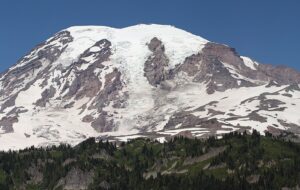About winter climbing, Nanga Parbat, K2 and choice of different route on summit-bid.
Interview with Muhammad Ali Sadpara (Part-1): From Concordia to Nanga Parbat Summit
Muhammad Ali Sadpara loves mountaineering. “I feel happy here (in the mountains),” he says. He has been part of around 20 climbing expeditions, including five in winter. This part of interview is about the journey from a curious novice to the first winter ascent of Nanga Parbat.
6. When and how did you start climbing in winter?
I have been part of climbing expeditions each summer since 2004. But when I saw climbers going to mountains in a season other than summer, I wondered why they do so (author’s note: current wave of winter climbing in Pakistan began in 2007). We used to think that reaching summit in winter is simply impossible.
I asked a friend (who was working with a winter expedition) to seek information from European climbers, why they climb in winter. So, he got back to me and told that the foreign teams take it as a challenge. They want to overcome the hurdles of harsh conditions. I was intrigued and told my friend that I would also want to be part of such an expedition. He said, “Most welcome, Ali”.
Sometimes people say that I am doing this for money, which isn’t true. This year, Alex Txikon and Daniele Nardi told me that they were unable to get any big sponsor and wouldn’t be able to pay me much. I said, don’t worry. I am least concerned about it. Let’s just go there and get the mountain climbed.
I never really made a demand for big money or pushed anyone to pay my desired amount. I have seen that when some HAPs become famous, they increase their rates and start demanding more money. For me, it’s unacceptable. I climb for the sake of climbing.
7. Winter climbing is difficult and dangerous. Don’t you feel any pressure from your family?
Initially I told them only half-truth, and they believed it for a while. I told them that the risk of rockfalls and avalanches is lower in winter. They agreed at that time. But after we lost Nisar Hussain on GI, they stopped believing me. My wife has pressure from her parents that despite losing friends there, Ali still climbs difficult mountains. My kids sometimes request me to give up this career.
I tell them that it’s my passion and I cannot live without it. My friends sometimes blame that I am doing it for money. I tell them that if it was about getting rich, I would have been doing something safer, somewhere else. Pakistan is a country full of resources.
8. During Nanga Parbat summit-bid, you climbed a different route from other team members. Why?
I climbed the route which I proposed to Alex Txikon and Daniele Nardi in winter 2015. However, conditions were tough then and it became difficult to continue the ascent. On that occasion, we started the summit push very early (around 3 AM) and I got mildly frostbitten. So, we turned back. I told them that this is the route, while they were of the opinion that we had to go up the Couloir.
This year, I told Simone Moro that there are two things about this route. First, we should go up the rocky part (on mountain’s left side, as climbed by Ali Sadpara this year). Although, there are some sections requiring a bit of technical climbing but it’s easier than icy couloir. However, this path is difficult on descent and we need to go down the couloir. Other members suspected that we may end up at an unclimbable section like previous year. Eventually, I went up my route and they climbed theirs.
Once on my path, I didn’t race up to the summit quickly, though. I ensured that we all remained in sight of each other.
9. With Nanga Parbat done, it’s all about winter K2 now. Are you interested?
Climbing isn’t a competition for me and Alex Txikon. Like this year on Nanga Parbat, various teams were racing for first place. Some said, we will do it in alpine style, like Adam Bielecki with whom I was on GI and fixed the Japanese couloir. Others had their own plans. We least cared about them. We had our own style and plan.
Nonetheless, yes, we are thinking about K2. If we have someone experienced in our team, like Simone Moro, we will definitely want to attempt the only remaining eight-thousander in winter.
10. Historically our government hasn’t been particularly interested in mountaineering. Have they announced any award or recognition for you?
Government officials, our media and fellow countrymen have started realizing the significance of mountains and mountaineering, which is the best prize for me. We had an amazing reception here in Islamabad and celebrations are also planned in Skardu. I remember, in 2006, when we returned from GII summit and there was a meeting with government authorities, a senior official asked, “So, what is this Nanga Parbat?” I was really disappointed. However, things have changed a lot, recently.






